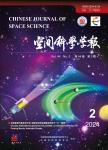A Brief Introduction and Recent Progress of the Geospace Double Star Program
A Brief Introduction and Recent Progress of the Geospace Double Star Program作者机构:Center for Space Science and Applied Research The Chinese Academy of Sciences Beijing 100080 China Center for Space Science and Applied Research The Chinese Academy of Sciences Beijing 100080 China
出 版 物:《空间科学学报》 (Chinese Journal of Space Science)
年 卷 期:2004年第24卷第Z1期
页 面:39-45页
核心收录:
学科分类:08[工学] 0825[工学-航空宇航科学与技术]
主 题:Solar-terrestrial space physics, Double star exploration project,International cooperation
摘 要:The Geospace Double Star Project (DSP) consists of two small satellites operating in the near-earth equatorial and polar regions, respectively. The goals of DSP are: (1) to provide high-resolution field, particle, and wave measurements in some important near-earth active regions which have not been covered by current ISTP missions, such as the near-earth plasma sheet and its boundary layer, the ring current, the radiation belts, the dayside magnetopause boundary layer, and the polar region; (2) to investigate the trigger mechanisms of magnetic storms, magnetospheric substorms, and magnetospheric particle events,as well as the responses of geospace storms to solar activities and interplanetary disturbances; (3) to set up the models describing the spatial and temporal variations of the near-earth space *** realize the above goals, the equatorial satellite TC-1 and the polar satellite TC-2 will accommodate, respectively, eight instruments on board. TC-1was launched successfully in December 2003 while the polar satellite (TC-2)will be launched in July 2004. The orbit of the equatorial satellite TC-1 consists of a perigee at 550 km, an apogee at 60 000 km, and an inclination of about 28.5; while the orbit of the polar satellite will have a perigee of 700 km, an apogee of 40 000 km, and an inclination of about 90. The two satellites will take coordinated measurements with Cluster Ⅱ and will first form a six-point exploration in *** operational status of TC-1 are introduced in this paper.



